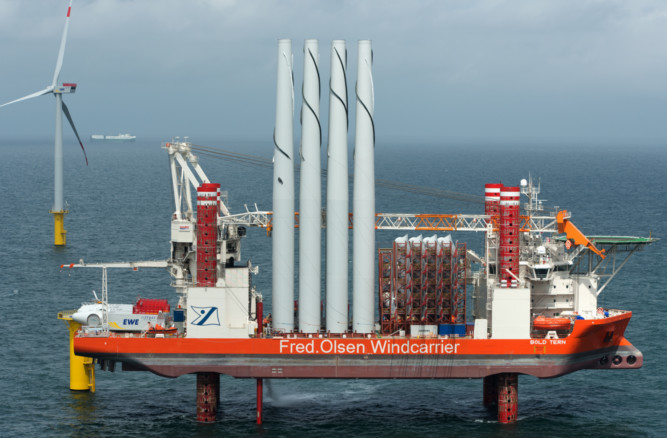Wind power is a limitless and free resource.
As such, it is ripe for exploitation as a supposedly green source of electricity.
Like hydro electric, the grand dame of green energy in the UK, onshore wind power schemes have been generating for decades now and are a mature, if intrusive, technology.
When offshore wind turbines were first developed they seemed to offer the solution to concerns that onshore arrays were an ugly blight on the landscape.
Out of sight, out of mind went the argument and as long as the turbines did their job powering the homes and businesses that you and I live and work in at reasonable cost then who would care if there was a new speck on the horizon?
But what seems like a relatively small step to transfer expertise offshore into the marine environment has been far from problem free.
The Scottish courts are deliberating on a Judicial Review sought and granted to the Royal Society for the Protection of Birds Scotland on the decision by Scottish Ministers to grant consents to three mega-arrays in the outer Firths of Tay and Forth.
Naturally, the bird protection charity is worried about how hundreds of turbines and the mammoth engineering effort to install and maintain them will impact on habitats.
Of the three contested consents, the Seagreen development is the biggest with a potential installed capacity of a massive 3.5 gigawatts if out.
Initially, just two phases are being pursued but they still represent billions of pounds of potential development.
The Inch Cape scheme is the mid sized array with a capacity of 784MW.
And the baby of the bunch, a phrase I use jokingly considering it would have the capacity to power every single home in Edinburgh, is Mainstream Renewable Power’s 450MW Neart na Gaoithe (NNG) scheme off the Fife coast. It is this latter scheme that is the most advanced in terms of consents, funding and readiness.
Mainstream say the scheme could be built and producing power within three years, bringing hundreds of jobs in the process.
It is a scheme that Mainstream has ploughed seven years into and more than £50 million in development cash.
In fact, all three have swallowed huge amounts of money but, if the Judicial Review goes against Scottish Ministers, that outlay could come to nothing.
I get the environmental argument who doesn’t want to see seabirds soaring or Scotland’s beautiful indigenous wildlife enjoying their natural habitats?
And I also believe that RSPB Scotland are sincere in their intentions and did not take the decision to seek review lightly it is their first such action in more than a decade after all.
But I worry about the impression that Scotland would be giving out if RSPB were to win the day here.
If I were an investor looking at where to put my cash then it would not be in the country that placed birds above business.
If that sounds callous, it is not meant to be. My argument is that business is black and white, it is about investment and return and certainty about the regulatory environment and political and financial landscape is key.
Plant a seed of doubt in investors minds and they will take their cash and their jobs elsewhere.
A positive outcome to the Judicial Review from RSPB Scotland’s perspective would do more than plant a seed.
It would be a full grown oak tree and the potential for a Scottish offshore power revolution would hang on the shoogliest of pegs.
I do not want that. What I want is for Scotland to demonstrate that it can do major infrastructure well, but also do it responsibly.
